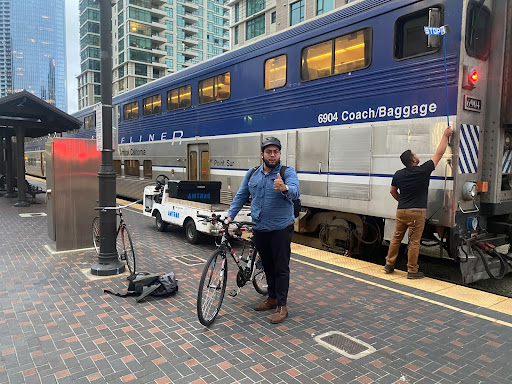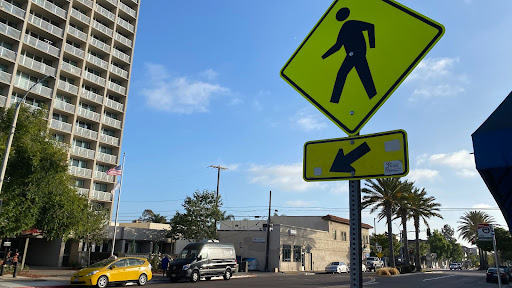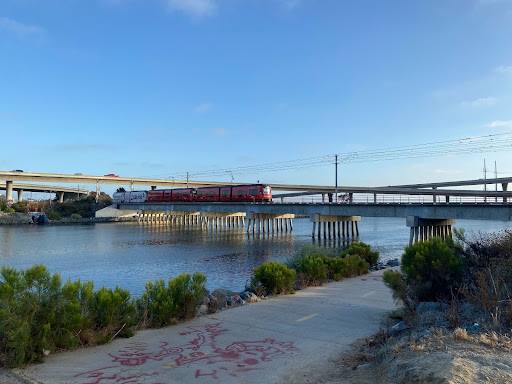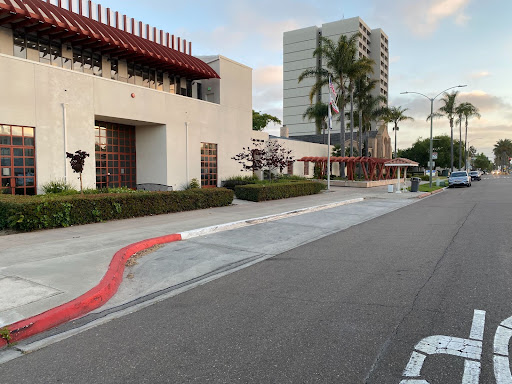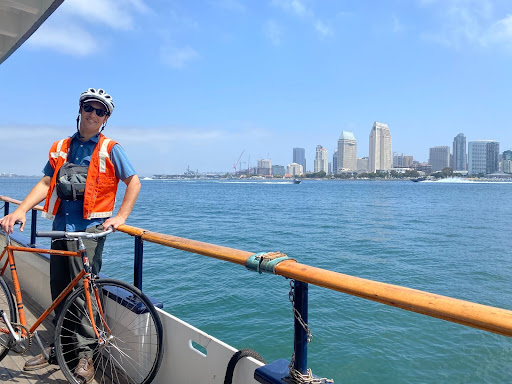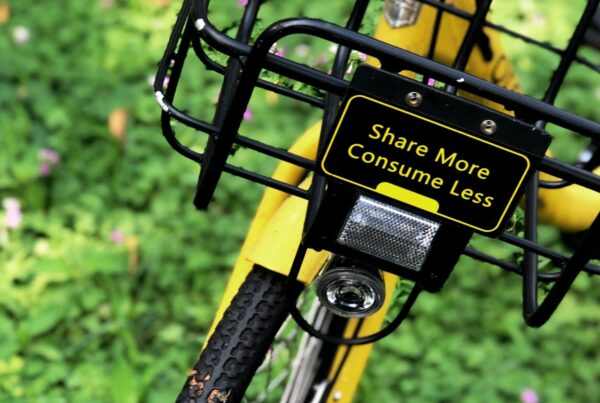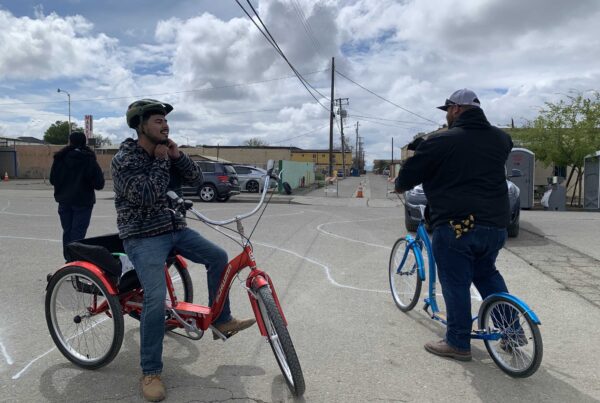Written by Joey Juhasz-Lukomski
In June of 2022, Fabian Campos, Senior Program Coordinator, and I, Joey Juhasz-Lukomski, Program Associate, at SUMC, traveled to the City of Chula Vista to visit one of the awardees of the Clean Mobility Options Voucher Pilot Program (CMO). CMO is a statewide public program that empowers under-resourced communities across California to better understand and overcome mobility obstacles with vouchers for funding community needs assessments and clean, shared, zero-emission transportation projects. The City of Chula Vista is in Southern California, 10 miles north of the Mexican border on unceded Tipal tribal land. The purpose of the trip was for us to attend the launch of the Chula Vista Community Shuttle, a zero-emission dial-a-ride service for seniors.
This was the first of many site visits for SUMC. Since we’re the technical lead for CMO, we’ll provide support to over 40 community projects throughout the State. Over the next five years, we’ll visit each community to witness their program launch, help with implementation, and evaluation. Naturally, this will require quite a bit of traveling, and that could mean a lot of flying and driving – two modes rich in GHG emissions. However, we at SUMC are committed to more sustainable transportation options that reduce GHG. So we ditched the car and used cleaner modes for our trip. This blog follows our travels.
Fabian and I loaded ourselves and our bikes on Amtrak’s Pacific Surfliner from Los Angeles to San Diego. Since neither of us had to concentrate on driving, we were able to talk about what it means to be respectful when conducting site visits, where we think the future of the industry is going, what Collective Action means in all of this (visit our Summit recap), and enjoy views of the Pacific Ocean. Once we arrived in San Diego, we rode the 9.8 miles on our bikes to Chula Vista.
Realistically, we didn’t expect to get any sort of “deeper understanding” of the community or lived experience by not driving. Indeed, we acknowledge fully that we are privileged to be able to ride bikes – at night through sparse industrial zones in an unfamiliar area no less – and feel safe doing so. And, three days in the city can’t really tell us what it’s like to live there and experience barriers to mobility.
Still, we caught glimpses into the city that we would not have been able to otherwise. For example, it was good to see how much pick-up and drop-off space there was in front of senior housing, that the American Legion (apparently a watering hole for the 65+ crowd) sat on a high hill in Chula Vista, and that the light rail stop was at the edge of the project area across several high-traffic arterials with lengthy wait times for walk signals. These are the insights that will help SUMC provide more personalized technical assistance with some knowledge of the built environment.
There were highlights too that we definitely would have missed had we driven everywhere. Walking around in the two days following the launch, we saw the service in use twice. And to get back to the San Diego train station, we had a chance to ride the Coronado Ferry. I’m wondering, what other modes can we add to the list as we carry out our site visits and various travels for SUMC-related work? Planes, Trains, and Automobiles can become Busses, Trains, and Ferries perhaps. Stay tuned.


